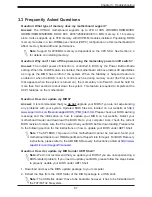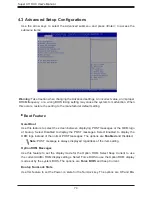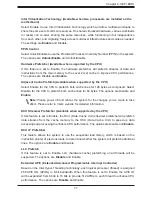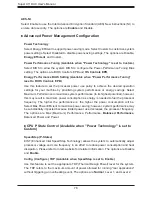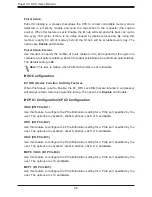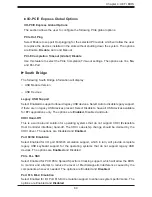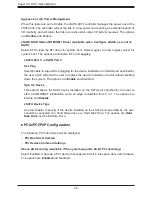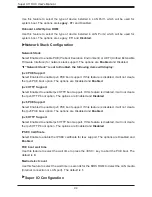
Super X11DAC User's Manual
80
Enhanced Halt State (C1E) (Available when Autonomous Core C-State is set to
Disable)
Select Enable to enable "Enhanced Halt State" support, which will significantly reduce the
CPU's power consumption by minimizing CPU's clock cycles and reduce voltage during a
"Halt State." The options are Disable and
Enable
.
Package C State Control (Available when "Power Technology" is set
to Custom)
Package C State
Use this feature to set the limit on the C-State package register. The options are C0/C1
state, C2 state, C6 (non-Retention) state, C6 (Retention) state, No Limit, and
Auto
.
CPU T State Control
Available when "Power Technology" is set to
Custom)
Software Controlled T-States
If this feature is set to Enable, CPU throttling settings will be supported by the software of
the system. The options are
Enable
and Disable.
Chipset Configuration
Warning:
Setting the wrong values in the following items may cause the system to malfunction.
North Bridge
This feature allows the user to configure the settings for the Intel North Bridge.
UPI (Ultra Path Interconnect) Configuration
This section displays the following UPI General Configuration information:
•
Number of CPU
•
Number of Active UPI Link
•
Current UPI Link Speed
•
Current UPI Link Frequency
•
UPI Global MMIO Low Base/Limit
•
UPI Global MMIO High Base/Limit
•
UPI PCI-e Configuration Base/Size


